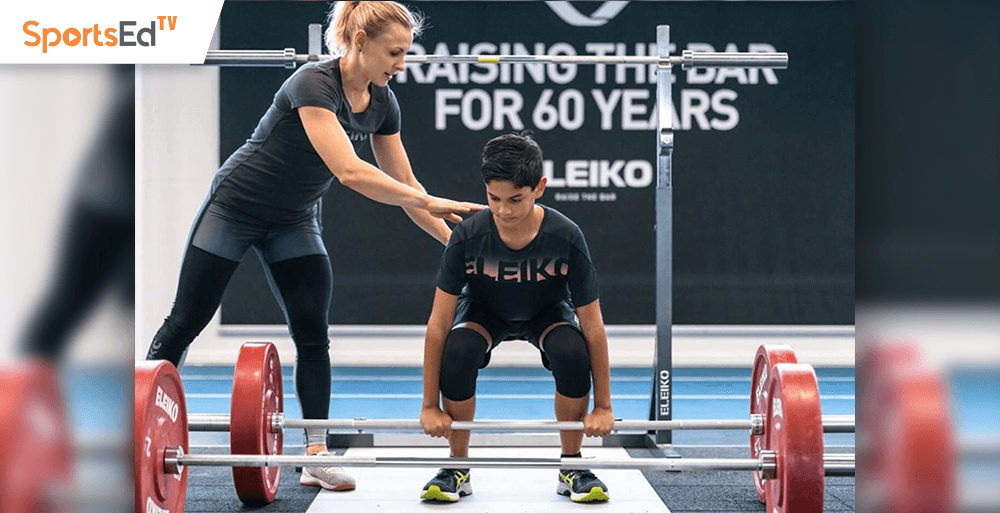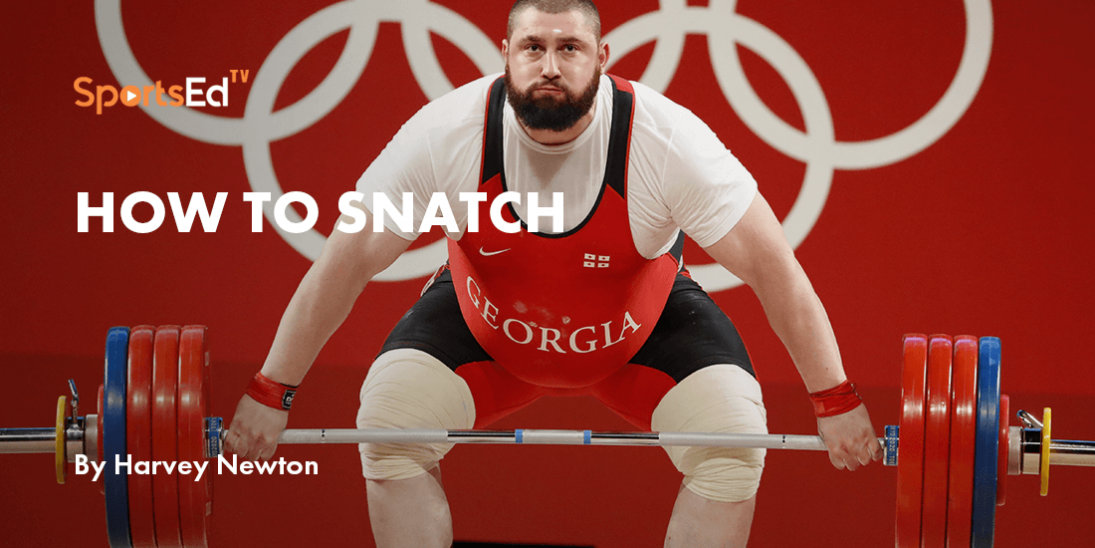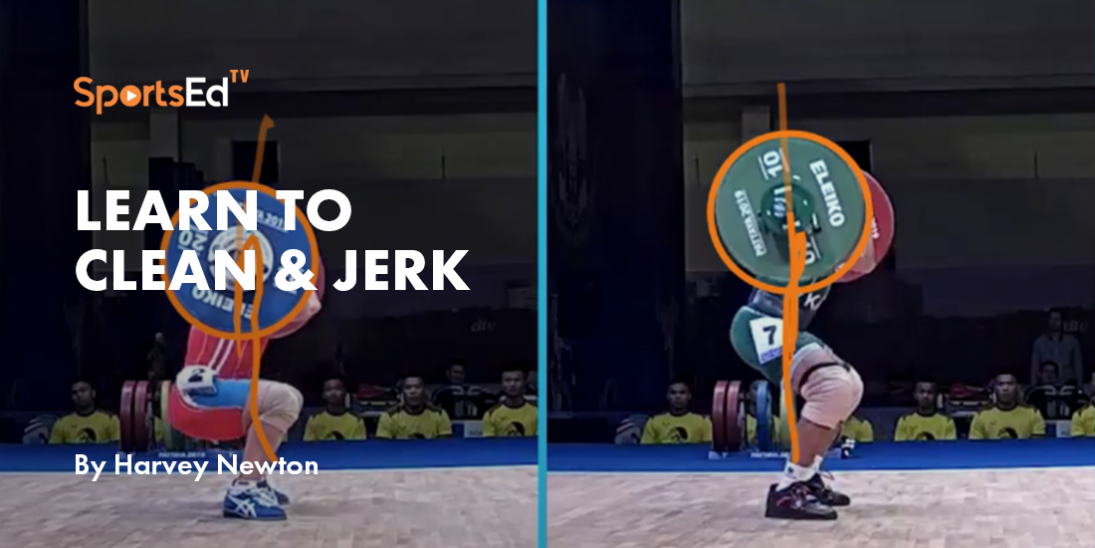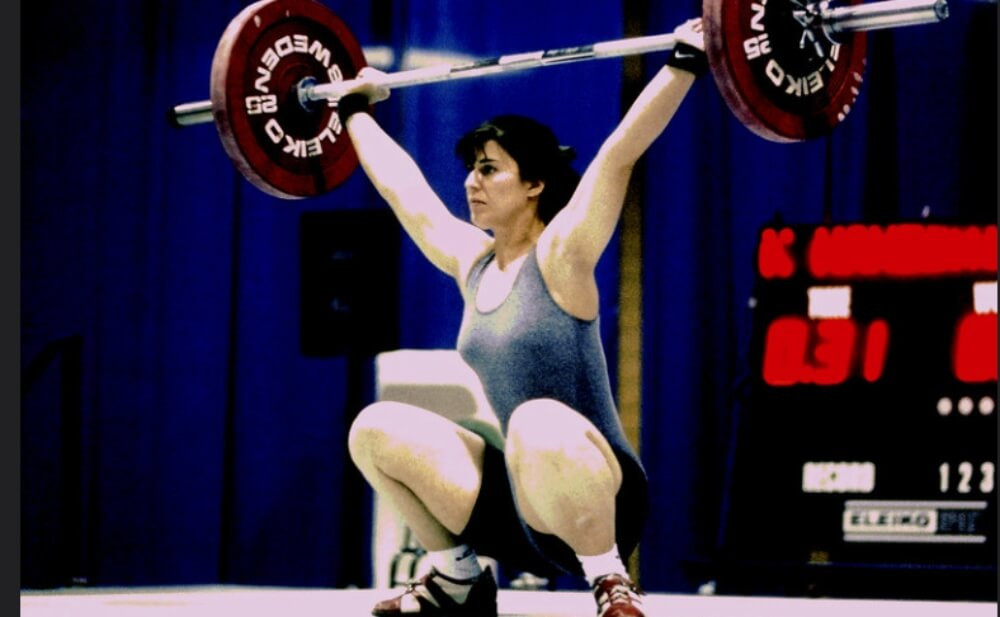Weightlifting
Welcome and thanks for visiting...

Split Jerk Footwork Details: Which Foot Lands First?
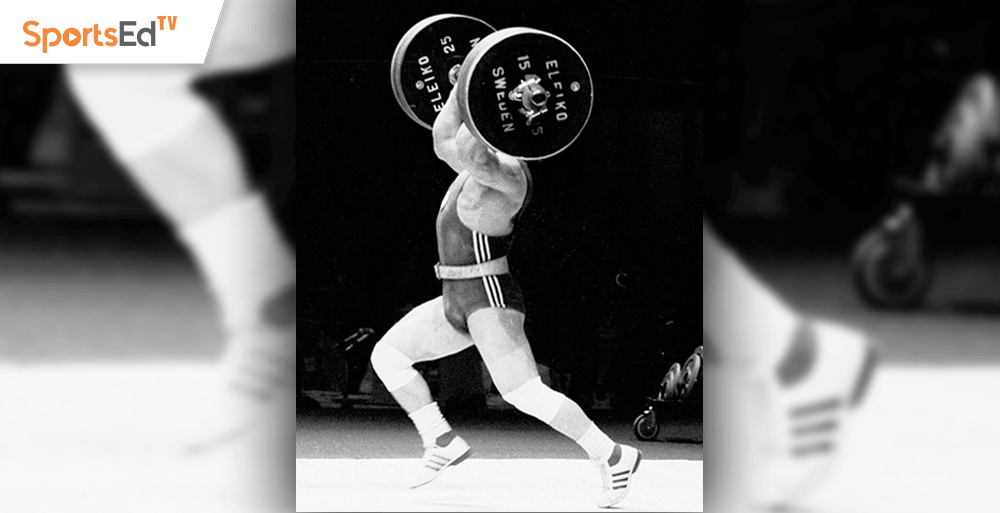
The recent blog by Brian Derwin offered some great ideas on dealing with overzealous officiating related to interpreting “press out” in the jerk. I’d like to follow up on the subject of the jerk during this blog.
I recently received an interesting question:
Q. In the split jerk, what do you think is the proper order for the feet landing on the platform?
A. I’ve heard some people claim that both the front and rear foot should land at the same time. OK, that’s a nice theory, but I doubt that many lifters actually do this. Further, I would suggest that most lifters have the rear foot, which is traveling farther, move first and land first. I have seen examples of lifters whose front foot lands first, but this seems inefficient.
With that background, let’s take this question a step farther, this time with photographic evidence.
From the IWF website, I viewed the great Dartfish video feedback of each of the following lifts. Randomly I chose the women’s 49kg category. Using the side view and going frame-by-frame on the top four lifters we have the following:
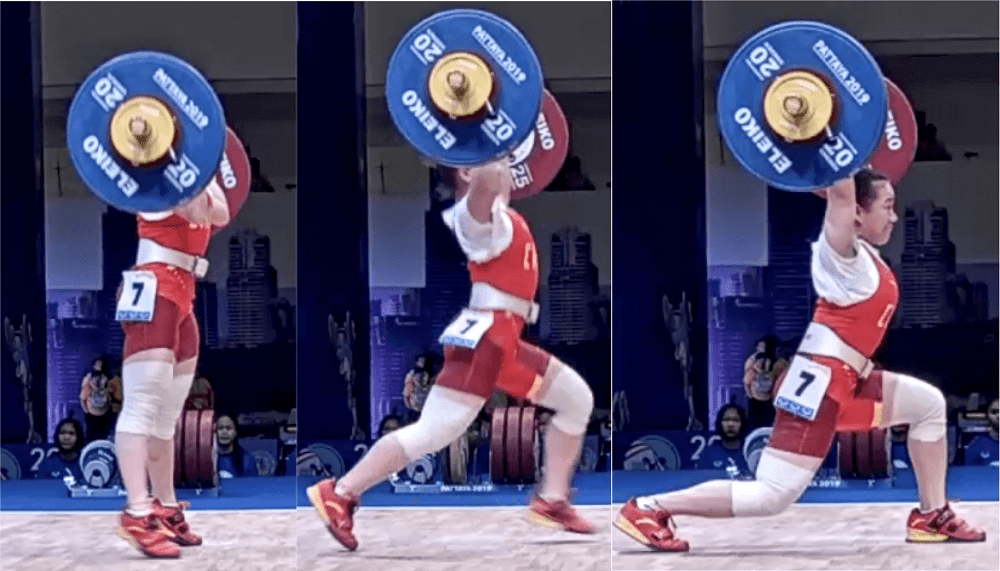 |
| Winner Jiang (CHN) with 118kg. Note: 1) symmetrical plantar flexion and full triple extension, and 2) the rear foot contacts the platform first. |
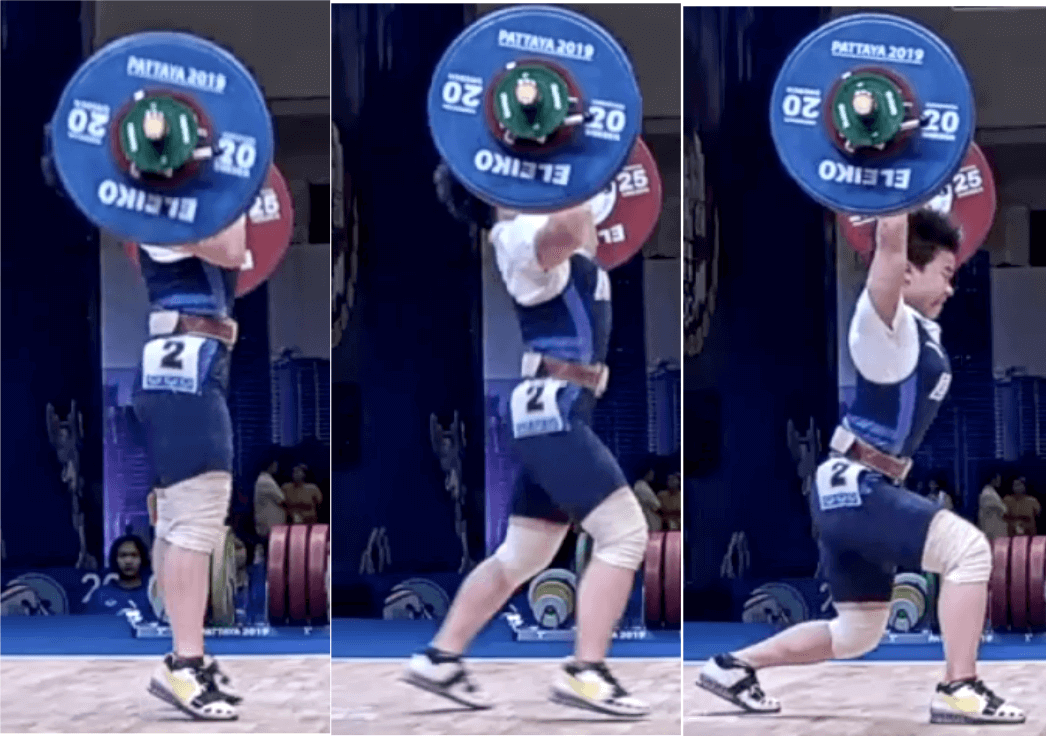 |
| Silver medalist Hou (CHN) with 117kg. Note: 1) symmetrical plantar flexion and full triple extension and 2) the rear foot contacts the platform first. |
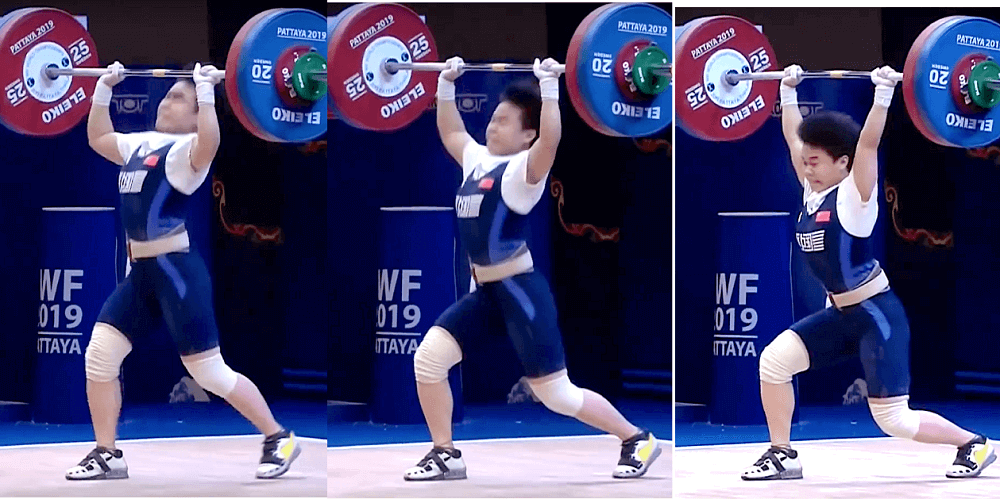
Here is the same attempt from a different angle. Highly unusual, when viewed frame-by-frame the video shows Hou’s rear foot moves farther rearward from the point of initial contact. Go ahead you sharp-eyed coaches, measure the distance between the front heel and the rear toes, and compare Photo A to Photo C.
Incidentally, on this lift Hou received a red light from the center referee. Although a video viewing of this lift raises no red flag for me, the above view of the lift suggests Hou pushed under from Photo A to Photo C. And based on the explanation of current rules in the last blog, this is an example that literally is not considered to be press out.
Of course, I can imagine with enough eyes and social media discussion, this situation may be quickly remedied by the IWF with a further tightening of the current rules.
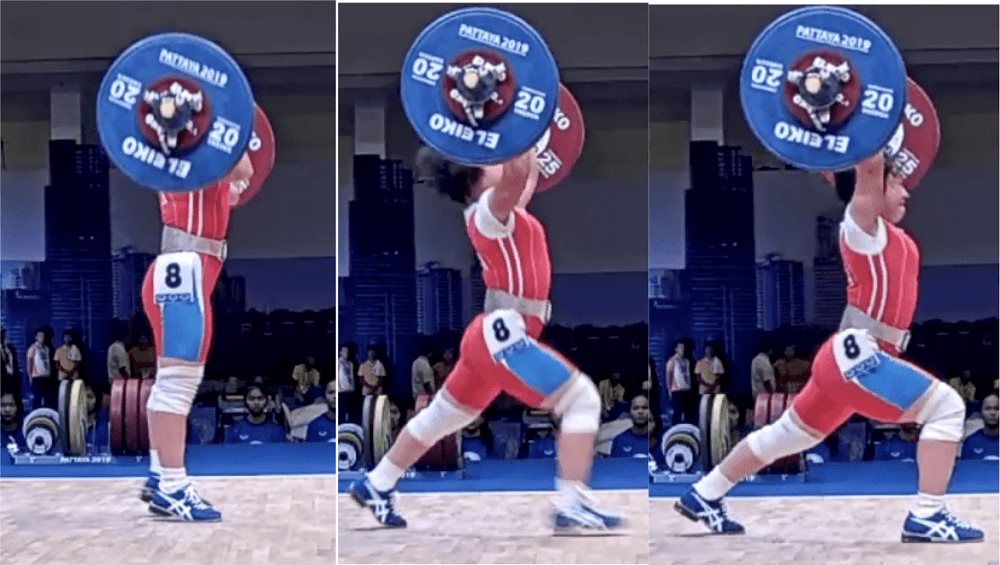 |
| Bronze medalist Ri (PRK) with 115kg. Note: 1) lesser plantar flexion, 2) typical initial movement of the rear foot, 3) rear foot contacts first. By comparison, this lifter has much more weight on the front leg than the two previous lifters. |
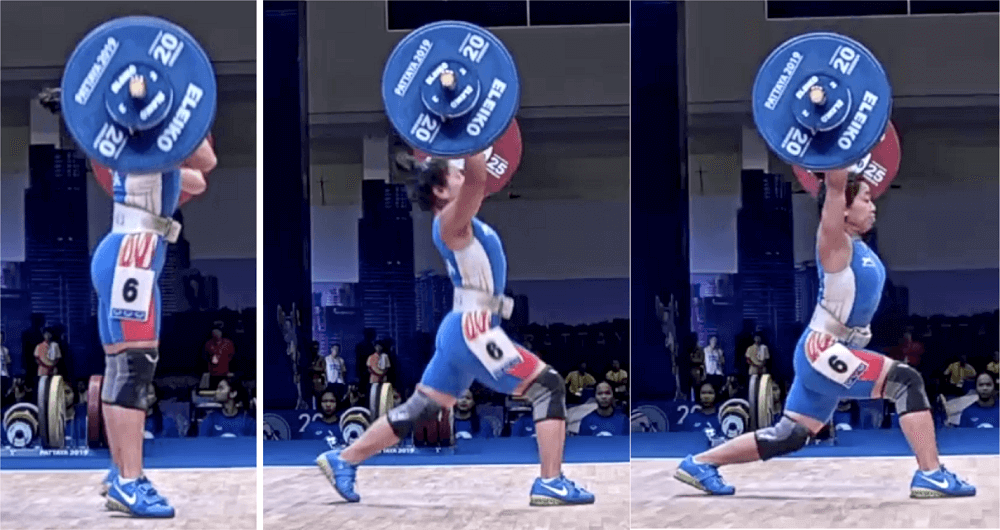 |
| Fourth place Mirabai (IND) with 114kg. Note: 1) lesser plantar flexion, 2) typical initial movement of rear foot, 3) front foot lands first. |
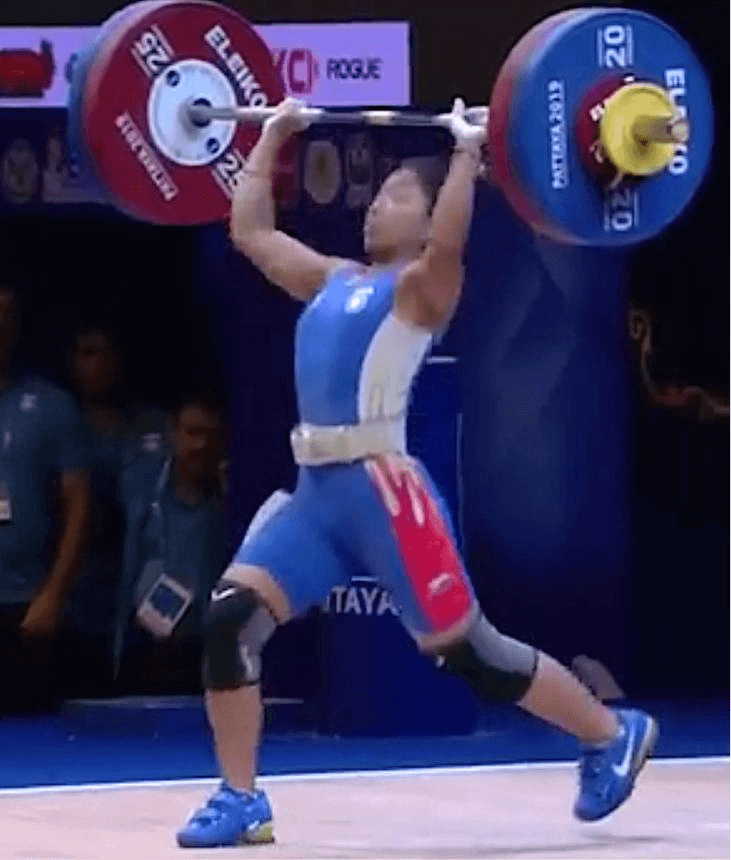 |
| The 3rd jerk attempt (her only miss) of 2017 World Champion Mirabai, shows more dramatically her front foot first split. This is not a strong position. |
Going slightly farther afield I looked at some other winners and their foot dynamics.
Here is Turkey’s World Champion, Erdogan (45kg), with her 92kg jerk. Clearly, her rear foot lands first.
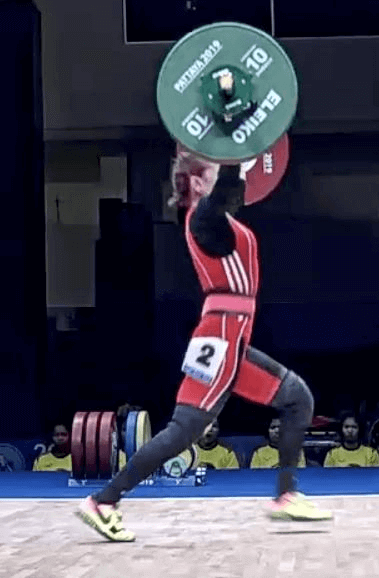
Another clear example of a rear foot landing first is 81kg World Champion Solis Arboleda.
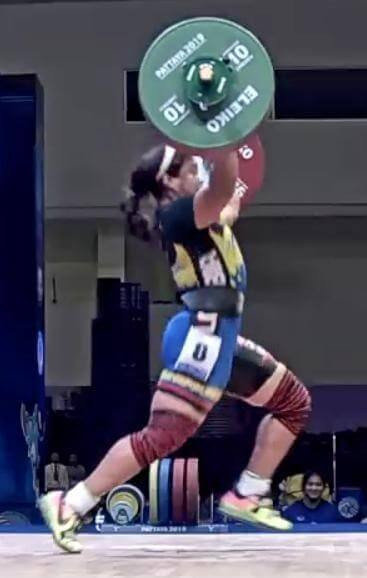
Looking at all the various options, one may wonder if the order of foot landing in the split jerk really makes much of a difference. Certainly the World’s best exhibit all sorts of foot placement. The bottom line remains: when a lifter encounters routine failures at certain intensities, it’s time to look at technique details. With visual evidence of how a lift is performed, coaches and athletes can then work together to eliminate inefficient actions.
Otherwise, remember that weightlifting is not a subjectively judged sport. We are not figure skating, diving, or gymnastics, where such varied technical performances would result in tenths of a point deduction to the athlete.
FEATURED IMAGE SOURCE: Bruce Klemens



